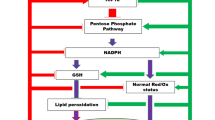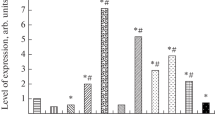Abstract
There is an increasing evidence of the neuroprotective effects of hypoxia inducing factor prolyl-hydroxylase inhibitors (HIF-PHDi) after hypoxic-ischemic (HI) brain damage (HIBD). We studied the neuroprotective effects of betulinic hydroxamate (BAH), a novel B55α/PP2A activator that dephosphorylates and inhibits PHD2 activity, in a rat model of neonatal HIBD. Seven-day-old (P7) Wistar rats were exposed to hypoxia after left carotid artery electrocoagulation and then received vehicle (HI + VEH) or BAH 3 mg/kg i.p. 30 min post-insult. Brain damage was assessed by magnetic resonance imaging (MRI) and neurobehavioral studies testing motor and cognitive performance at P14 and P37, as well as immunohistochemical studies (TUNEL and myelin basic protein (MBP) signal) at P37. Mechanisms of damage were assessed at P14 determining excitotoxicity (glutamate/N-acetylaspartate ratio by H+-magnetic resonance spectroscopy), oxidative stress (protein nitrosylation by Oxyblot), and inflammation (cytokine and chemokine concentration). BAH reduced brain damage volume and cell death, preventing the development of motor and working memory deficits. BAH showed a robust protective effect on myelination, restoring MBP expression at P37. BAH modulated excitotoxicity, oxidative stress, and inflammation. Most neuroprotective effects were still present despite BAH administration was delayed for 12 h, whereas beneficial effects on motor strength at P14 and on cell death and myelination at P37 were preserved even when BAH administration was delayed for 24 h. In conclusion, BAH appears as an effective neuroprotective treatment for neonatal HIBD in a manner associated with the modulation of excitotoxicity, oxidative stress, and inflammation, showing a broad therapeutic window.







Similar content being viewed by others
Data Sharing Statement
Deidentified individual participant data (including data dictionaries) will be made available, in addition to study protocols, the statistical analysis plan, and the informed consent form. Data will be made available upon publication to researchers who provide a methodologically sound proposal for use in achieving the approved proposal’s goals. Proposals should be submitted to the corresponding author.
References
Parikh P, Juul SE. Neuroprotective strategies in neonatal brain injury. J Pediatr. 2018;192:22–32.
Gonzalez FF, Ferriero DM. Therapeutics for neonatal brain injury. Pharmacol Ther. 2008;120:43–53.
Johnston MV, Fatemi A, Wilson MA, Northington F. Treatment advances in neonatal neuroprotection and neurointensive care. Lancet Neurol. 2011;10:372–82.
Laptook AR, Shankaran S, Tyson JE, Munoz B, Bell EF, Goldberg RN, et al. Effect of therapeutic hypothermia initiated after 6 hours of age on death or disability among newborns with hypoxic-ischemic encephalopathy a randomized clinical trial. JAMA. 2017;318:1550–60.
Fan X, Heijnen CJ, van der Kooij MA, Groenendaal F, van Bel F. The role and regulation of hypoxia-inducible factor-1α expression in brain development and neonatal hypoxic-ischemic brain injury. Brain Res Rev. 2009;31:99–108.
Trollmann R, Gassmann M. The role of hypoxia-inducible transcription factors in the hypoxic neonatal brain. Brain Dev. 2009;31:503–9.
Chu HX, Jones NM. Changes in hypoxia-inducible factor-1 (HIF-1) and regulatory prolyl hydroxylase (PHD) enzymes following hypoxic–ischemic injury in the neonatal rat. Neurochem Res. 2016;41:515–22.
Siddiq A, Aminova LR, Ratan RR. Prolyl 4-hydroxylase activity-responsive transcription factors: from hydroxylation to gene expression and neuroprotection. Front Biosci. 2008;13:2875–87.
Chen W, Jadhav V, Tang J, Zhang JH. HIF-1 alpha inhibition ameliorates neonatal brain damage after hypoxic-ischemic injury. Acta Neurochir Suppl. 2008;102:395–9.
Min J, Hu J, He M, et al. Vitexin reduces hypoxia e ischemia neonatal brain injury by the inhibition of HIF-1alpha in a rat pup model. Neuropharmacology. 2015;99:38–50.
Vetrovoy O, Rybnikova E. Neuroprotective action of PHD inhibitors is predominantly HIF-1-independent. J Neurochem. 2019;150:645–7.
Li K, Li T, Wang Y, et al. Sex differences in neonatal mouse brain injury after hypoxia-ischemia and adaptaquin treatment. J Neurochem. 2019;150:759–75.
Stetler RA, Leak RK, Gan Y, et al. Preconditioning provides neuroprotection in models of CNS disease: paradigms and clinical significance. Prog Neurobiol. 2014;114:58–83.
Di Conza G, TrussoCafarello S, Loroch S, et al. The mTOR and PP2A pathways regulate PHD2 phosphorylation to fine-tune HIF1α levels and colorectal cancer cell survival under hypoxia. Cell Rep. 2017;18:1699–712.
Ehling M, Celus W, Martín-Perez R, et al. B55α/PP2A limits endothelial cell apoptosis during vascular remodeling: a complementary approach To Disrupt Pathological Vessels? Circ Res. 2020;127:707–23.
Taleski G, Sontag E. Protein phosphatase 2A and tau: an orchestrated “Pas de Deux.” FEBS Lett. 2018;592:1079–95.
Prados ME, Correa-Sáez A, Unciti-Broceta J, et al. Betulinic acid hydroxamate is neuroprotective and induces protein phosphatase 2A-dependent HIF-1α stabilization and post-transcriptional dephosphorylation of prolyl hydrolase 2. Neurotherapeutics. 2021. https://doi.org/10.1007/s13311-021-01089-4.
Pazos MR, Cinquina V, Gómez A, et al. Cannabidiol administration after hypoxia-ischemia to newborn rats reduces long-term brain injury and restores neurobehavioral function. Neuropharmacology. 2012;63:776–83.
Ceprián M, Vargas C, García-Toscano L, et al. Cannabidiol administration prevents hypoxia-ischemia-induced hypomyelination in newborn rats. Front Pharmacol. 2019;10:1131.
Ceprián M, Jiménez-Sánchez L, Vargas C, Barata L, Hind W, Martínez-Orgado J. Cannabidiol reduces brain damage and improves functional recovery in a neonatal rat model of arterial ischemic stroke. Neuropharmacology. 2017;116:151–9.
Paxinos G, Watson C. The rat brain in stereotaxic coordinates. 3rd edition. San DiegoAcademic Press. 1996.
Barata L, Arruza L, Rodríguez M-J, et al. Neuroprotection by cannabidiol and hypothermia in a piglet model of newborn hypoxic-ischemic brain damage. Neuropharmacology. 2019;146:1–11.
Pazos MR, Mohammed N, Lafuente H, et al. Mechanisms of cannabidiol neuroprotection in hypoxic-ischemic newborn pigs: role of 5HT(1A) and CB2 receptors. Neuropharmacology. 2013;71:282–91.
Lafuente H, Pazos MR, Alvarez A, et al. Effects of cannabidiol and hypothermia on short-term brain damage in new-born piglets after acute hypoxia-ischemia. Front Neurosci. 2016;10:323.
Minassi A, Rogati F, Cruz C, et al. Triterpenoid hydroxamates as HIF prolyl hydrolase inhibitors. J Nat Prod. 2018;81:2235–43.
Trollmann R, Richter M, Jung S, Walkinshaw G, Brackmann F. Pharmacologic stabilization of hypoxia-inducible transcription factors protects developing mouse brain from hypoxia-induced apoptotic cell death. Neuroscience. 2014;278:327–42.
Prados ME, García-Martín AG-M, Unciti-Broceta JD, et al. Betulinic acid hydroxamate prevents colonic inflammation and fibrosis in murine models of inflammatory bowel disease. Acta Pharmacol Sin. 2021;42:1124–38.
Adamcio B, Sperling S, Hagemeyer N, Walkinshaw G, Ehrenreich H. Hypoxia inducible factor stabilization leads to lasting improvement of hippocampal memory in healthy mice. Behav Brain Res. 2010;208:80–4.
Mohammed N, Ceprian M, Jimenez L, Pazos MR, Martínez-Orgado J. Neuroprotective Effects of cannabidiol in hypoxic ischemic insult the Therapeutic Window in Newborn Mice. CNS Neurol Disord Drug Targets. 2017;16:102–8.
Iwai M, Stetler RA, Xing J, et al. Enhanced oligodendrogenesis and recovery of neurological function by erythropoietin following neonatal hypoxic/ischemic brain injury Masanori. Stroke. 2010;41:1032–7.
Janowska J, Sypecka J. Therapeutic strategies for leukodystrophic disorders resulting from perinatal asphyxia: focus on myelinating oligodendrocytes. Mol Neurobiol. 2018;55:4388–402.
Yuen TJ, Silbereis JC, Griveau A, et al. Oligodendrocyte-encoded HIF function couples postnatal myelination and white matter angiogenesis. Cell. 2014;158:383–96.
Taie S, Ono J, Iwanaga Y, Tomita S, Asaga T, Chujo K, et al. Hypoxia-inducible factor-1α has a key role in hypoxic preconditioning. J Clin Neurosci. 2009;16:1056–60.
Bergeron M, Yu AY, Solway KE, Semenza GL, Sharp FR. Induction of hypoxia-inducible factor-1 (HIF-1) and its target genes following focal ischaemia in rat brain. Eur J Neurosci. 1999;11:4159–70.
Bernaudin M, Nedelec AS, Divoux D, MacKenzie ET, Petit E, Schumann-Bard P. Normobaric hypoxia induces tolerance to focal permanent cerebral ischemia in association with an increased expression of hypoxia-inducible factor-1 and its target genes, erythropoietin and VEGF, in the adult mouse brain. J Cereb Blood Flow Metab. 2002;22:393–403.
Salama M, Mohamed WM. Tau protein as a biomarker for asphyxia: a possible forensic tool? Appl Transl Genom. 2016;9:20–2.
Acknowledgements
We are indebted to Maria Cruz Rodríguez-Bobada and Pablo González López for their help performing this experiment.
Funding
This project received funding from Emerald Health Biotechnology España S.LU. and Instituto de Salud Carlos III through the project PI19/00927 (Co-funded by European Regional Development Fund/European Social Fund “A way to make Europe”/ “Investing in your future”).
Author information
Authors and Affiliations
Corresponding author
Ethics declarations
Ethics Approval
All applicable international, national, and/or institutional guidelines for the care and use of animals were followed.
Conflict of Interest
José Martinez-Orgado has a Research Agreement with Emerald Health Biotechnology España S.L.U. (Córdoba, Spain). The other authors declare no conflict of interest.
Additional information
Publisher’s Note
Springer Nature remains neutral with regard to jurisdictional claims in published maps and institutional affiliations.
Juan Diego Unciti-Broceta and Jose Martínez-Orgado are equal senior authors.
Supplementary Information
Below is the link to the electronic supplementary material.
Rights and permissions
About this article
Cite this article
Silva, L., Vargas, C., Prados, M.E. et al. Neuroprotective Efficacy of Betulinic Acid Hydroxamate, a B55α/PP2A Activator, in Acute Hypoxia–Ischemia-Induced Brain Damage in Newborn Rats. Transl. Stroke Res. 14, 397–408 (2023). https://doi.org/10.1007/s12975-022-01017-4
Received:
Revised:
Accepted:
Published:
Issue Date:
DOI: https://doi.org/10.1007/s12975-022-01017-4




